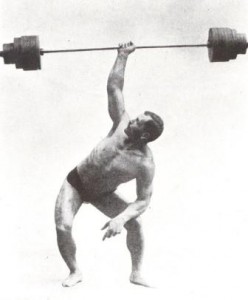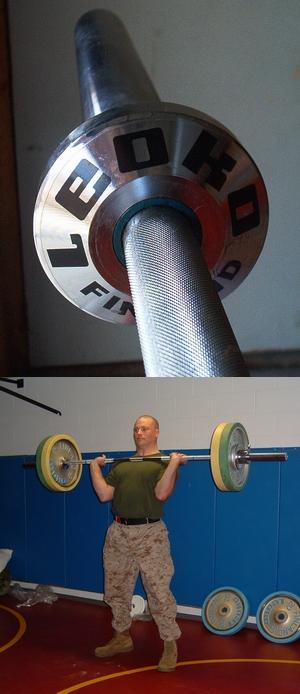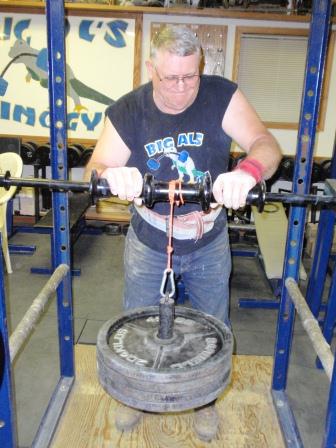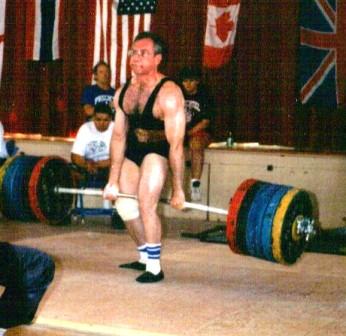MEET ANNOUNCEMENT
by David Dellanave
 The Movement is proud to host the first USAWA lifting meet in Minnesota, hosted by the first weightlifting club in Minnesota!
The Movement is proud to host the first USAWA lifting meet in Minnesota, hosted by the first weightlifting club in Minnesota!
The USAWA was formed to continue the tradition of the old-time strongmen. There are over 150 recognized lifts in the rule book, so anyone can find a lift they find fun and exciting to train. Some records have been on the books for many decades, and others fall every year. The USAWA has a drug testing policy to encourage drug free lifters and considers that a point of pride. There has never been a weightlifting club in Minnesota, and we are very excited to continue this tradition and grow the weightlifting club.
The meet will be held at The Movement Minneapolis – Plymouth on March 3rd. Weigh-in at 9:30am, lifting begins at 10am.
Lifts to be contested:
Jefferson Deadlift – “This lift is also known as the Straddle Deadlift. The rules of the Deadlift apply except that the bar will be lifted between the legs, with a leg on each side of the bar. The lifter may face any direction and feet placement is optional. One hand will grip the bar in front of the lifter while the other hand will grip the bar behind the lifter. The bar may touch the insides of either leg during the lift. The heels are allowed to rise as the bar is lifted, but the feet must not change position. The bar is allowed to change directions or rotate during the lift.”
Dumbbell Snatch – “The rules of the Bar Snatch – One Arm apply except one evenly loaded dumbbell is used. The dumbbell may start at any position on the platform. The dumbbell is allowed to rotate during the lift and may finish in any degree of rotation.”
Axle Clean & Push Press – “The rules of the Clean and Press apply with these exceptions. The heels and toes may rise during the press. However, the feet must not move. The legs may bend during the press to initiate upward movement, but the legs must straighten simultaneously with the completion of the press. The rules of the Clean and Push Press apply except a Fulton (2″/Axle) Bar is used”
Bent Over Row – “The lift will start at the lifter’s discretion with the bar placed on the platform in front of the lifter. The lifter will grip the bar with an overhand grip with the palms of the hands facing the lifter. The width of grip spacing and feet placement is of the lifter’s choosing, but the feet must be in line with the bar. The body must be in a bent over position at the waist. The upper body must not straighten past 45 degrees parallel to the platform at any time during the lift or it is a disqualification. The legs may be bent during the lift and upon the completion of the lift. The bar is lifted to touch the abdomen or torso by bending the arms. The bar must touch the abdomen higher than the belt, or the navel if a belt is not worn”
Dinnie Lift – “Two weight loadable Vertical Bars with ring handles attached are used in this lift. The maximum height from the floor to the top of the lifting rings is 21 inches. One Vertical Bar’s weight MUST not exceed 75% of the other. Any style of lifting may be used. The lift ends when the lifter is upright and motionless. The lifter may have the Vertical Bars at the side, or may straddle them. A time limit of 1 minute is given to accomplish a legal lift. The weights may be dropped within this time limit, and the lifter may reset and try again. An official will give a command to end the lift. Lifting straps of any kind are NOT allowed!”
At the conclusion of the meet events, we will open the competition up to break any USAWA or IAWA (International) record you think you can break. There are very few events that we do not have the equipment for, so we will accomodate virtually any lift that you want to do.
The meet entry is completely FREE but you must be a USAWA member. The $25 membership fee can be paid the day of competition.
Lifting uniform: Shorts and shirt or one-piece lifting singlet. A belt may be worn and must not exceed 12 centimeters or 4-3/4 inches in width.
Exact rules and weight classes are in the rule book if you are curious, otherwise all rules will be explained the at the competition.



